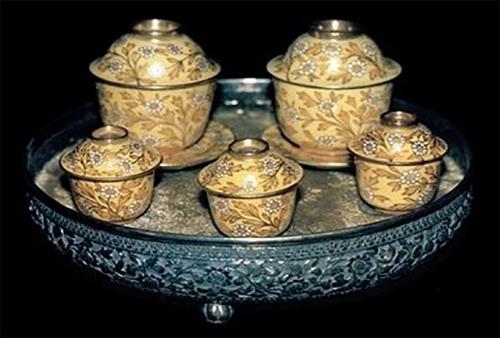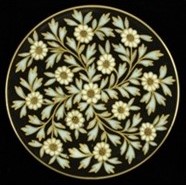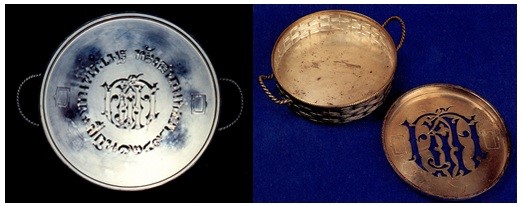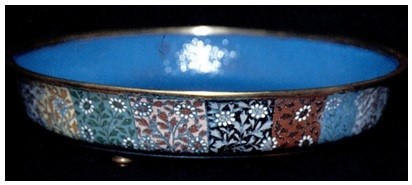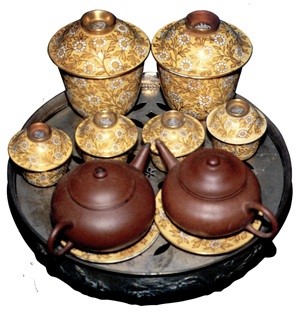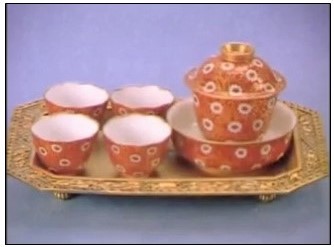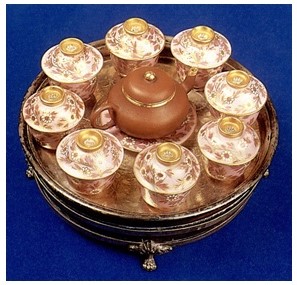During the reign of King Rama V, there was a great influx of knowledge from the West, including new technology as well as modern arts and cultures. The king received his education abroad. His Majesty travelled to Singapore, India, and Europe. All the factors led to modernisation of the country in order to elevate the country to the same level as that of the West. Changes occurred in a way that has never happened before in response to modern civilisation. The porcelain for royal use was not an exception. During this period, porcelain wares were brought in from the West. According to The History of Tablewares and Pottery, written by Prince Damrong Rachanuphap, "There are great numbers of porcelain being imported into Thailand during the reign of King Rama V, including Chinaware, Japanese porcelain, and Western-style porcelain. They were used as dinnerware as well as a decoration. For example, the elites usually used porcelain wares with Western designs during meals...” Furthermore, it was discovered that there Benjarong ware and gold-painted porcelain were ordered to be made in France. These were called ‘Chakri Porcelain’. They were given away as a royal gift.
Chakri Porcelain
‘Chakri Porcelain’ refers to Benjarong ware and gold-painted porcelain wares which King Chulalongkorn (King Rama V) had commissioned in 1887 to be made by the Sèvres factory in France, where the porcelain used in the French court were being made. The commission was completed by Prince Suppasat Suphakij. The porcelain was to be given away as a keepsake in the royal funeral of four royal family members, who passed away on the same year, including:
- Her Royal Highness Princess Saowapak, the Royal Consort. Date of death: 21th July 1887.
- Her Royal Highness Princess Pahurat Maneemai. Date of death: 27th August 1887.
- His Royal Highness Prince Tripetch Ruthamrong. Date of death: 12th November 1887.
- His Royal Highness Prince Sirirat Kakutthaphan. Date of death: 31th May 1887.
The Characteristics of Chakri Porcelain
Amber Chakri porcelain
Daisy flower pattern on Chakri porcelain lined in gold with white petals
‘Chakri Porcelain’ is a kind of ceramic ware that was baked on high temperature, with a decoration of multicolour glaze. They are made in western style, painted with colours and gold. Chakri Porcelain comes in the shape of a measuring cup or a lotus-shaped tea cup, with a round lid and a gold brim. The knob of the lid is made in a low cylinder shape, painted with gold. The middle of the knob is a disc and a trident symbol which form the emblem of the Chakri Dynasty. The pattern of the body and the lid was that of daisy flower, done in Western style. The leaves and the flowers are lined in gold. Both for the golden and silver set, the colour of the daisy pollen are in the same as the background, while the petals are white.
A disc and a trident symbol which form the emblem of the Chakri Dynasty
Different sets of Chakri Porcelain vary in background colours. There are 9 background colours, including red, yellow, pink, green, white, blue, black, gold, and silver. They are made in two sizes:
1. Standard sized sets to be given to high-ranking royal family members and high-ranking officials who were adults.
2. Smaller sized sets, specifically called Chao Fa set or Prince’s set, to be given to female court officers and younger royal family members.
The porcelain commemorating Prince Siriraj Kakuttaphan, contain the Thai letters and numbers "ศ ร ก 1249”. The three Thai letters are the monogram of Prince Siriraj Kakuttaphan and the four Thai numbers are the year of 1249 in Chula Sakarat or Thai Minor Era.
Additionally, serving trays were also made especially to accompany the Chakri porcelain set. The trays are made in two different styles:
1. Woven style The trays in this style have double holders, are made with silver or gold-plated silver. The centre is a silver plate with the carving "The Royal Funeral at Sanamluang, the Year of the Pig, 1249” and the initial ศรก.
Trays in woven style
2. Round style The trays has a high brimming, with an enameled daisy pattern identical to that on the teacups. They are four-legged; the legs are knob-shaped. The centre is a silver plate with the carving of the royal monogram จปร.
A tray in round style
The various arrangements of Chakri Porcelain
Chakri Porcelain can be arranged in four different ways:
1. Double kettle tea set, Thai style. This set includes a tray, two round-legged tea pots and saucers, four lotus-shaped teacups with lids.
Double kettle tea set, Thai style
2. Ji Bo set. This set includes a tray with round-legged stand, two round-legged tea pots and saucers, two Ji Bo-style teacups with lids, and four smaller measuring teacups with lids.
Ji Bo set
3. Chinese set. This set includes a tray, a Ji Bo-style brewing cup with lids, and four smaller measuring teacups with lids, a small lotus-shaped bowl, and four teacups without a lid.
Chinese set
4. Dao Lom Duen set. This set includes a tray, two round-legged tea pots and saucers placed in the middle, surrounded by eight lotus-shaped teacups with lid. This style is mostly for the younger royal members.
Dao Lom Duen set
‘Chakri Porcelain’ is considered a national treasure, representing the fondness of King Rama V towards Western art. Furthermore, the items are also art pieces that are embedded with historical implication which can explain historic events very well.
